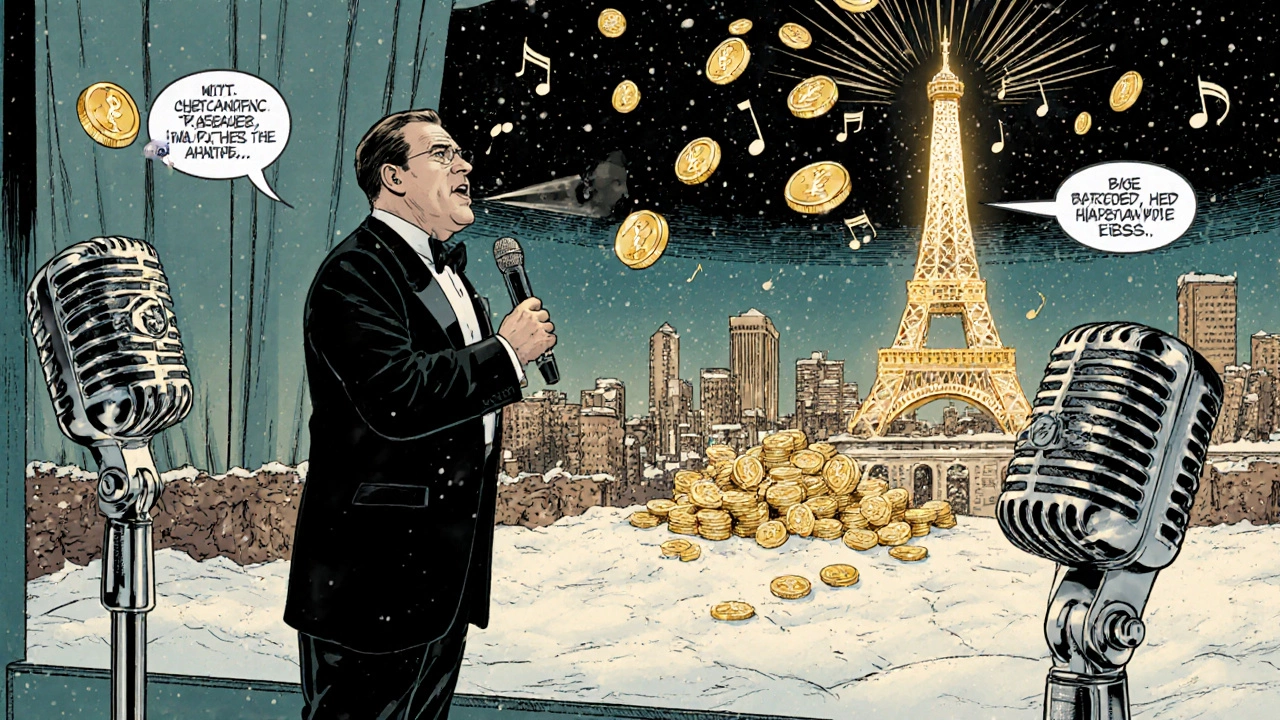Music Royalty Calculator
Calculate Your Song's Earnings
How This Works
Based on industry standards from the article:
• Streaming: $0.004 per stream
• Performance: $0.10 per play
• Sync License: $150,000 average per deal
Note: Actual earnings vary based on publishing deals and territory. This calculator uses estimates from White Christmas and other top earners in the article.
Estimated Earnings
Pro Tip: The article shows how White Christmas earned over $3 billion because of its annual holiday rotation, sync deals, and early publishing advantages. Your song's longevity matters more than initial sales!
Ever wondered which tune has raked in the biggest cash pile in music history? It’s not a pop hit from the 2020s, nor an indie track you hear on a coffee shop playlist. The answer lies in a wartime classic that still pops up on holiday radio. Let’s break down how that song beat every other contender, why the numbers matter, and where Indian folk music fits into the global money‑making picture.
How We Measure a Song’s Money‑Making Power
Before naming the champion, we need a clear definition of "money made." Most analysts add up three main streams:
- Mechanical royalties - earnings from physical sales, digital downloads, and streaming plays.
- Performance royalties - fees collected when the song is played on radio, TV, live venues, or public places.
- Synchronization licenses - payments for using the track in movies, commercials, or video games.
All figures are usually converted to US dollars to keep the comparison fair across borders.
The Global Heavyweight: White Christmas is a holiday standard written by Irving Berlin in 1942 and famously recorded by Bing Crosby. It holds the Guinness World Record for the best‑selling single of all time, with over 50 million copies sold worldwide.
Why does White Christmas stay on top?
- It launched before the modern royalty system, allowing the composer to negotiate a massive upfront payment for sheet‑music sales.
- The 1942 movie "Holiday Inn" and later TV specials gave it huge synchronization revenue.
- Every December, radio stations, streaming playlists, and even retail stores replay the song, generating steady performance royalties decade after decade.
Various estimates put its total earnings north of US$3 billion when you add mechanical, performance, and sync income together. That dwarfs newer streaming giants.
Close Contenders from Different Eras
While White Christmas reigns supreme, a few other tracks have crossed the $2 billion mark.
| Song | Artist/Writer | Primary Revenue Sources | Estimated Total |
|---|---|---|---|
| Happy Birthday to You | Patty Hill & Mildred J. Hill | Performance royalties, licensing for ads and movies | ~$2.2 B |
| Candle in the Wind (1997 version) | Elton John & Bernie Taupin | Sales, streaming, benefit concert royalties | ~$2.0 B |
| Despacito | Luis Fonsi, Daddy Yankee, Justin Bieber | Streaming, YouTube ad revenue, syncs | ~$1.9 B |
Notice a pattern: most of the money comes from repeated public exposure, not just a one‑off album sale.

Indian Folk Songs: A Different Money Model
Indian folk music operates in a parallel universe where royalty collection is still catching up. Here are a few classic folk numbers and how they generate income:
- Raghupati Raghav Raja Ram - Used in movies, religious gatherings, and government cultural programs. Royalties mostly come from film syncs and occasional TV performances.
- Vande Mataram - The nationalistic anthem that appears in countless documentaries and school events. Its revenue is modest, spread across public‑performance fees.
- Madhuban Mein Radhika Naache - Frequently sampled in Bollywood soundtracks; earnings rely on sync licenses.
Even the most popular Indian folk song rarely crosses the $100 million threshold, mainly because the Indian royalty collection societies (like IPRS and PPL) are still developing comprehensive tracking for live and digital plays.
Streaming - The Great Leveler
Since the mid‑2010s, streaming platforms have become the main source of mechanical royalties. Songs that dominate playlists can rake in huge sums quickly, but the per‑stream payout is tiny - a few fractions of a cent. For a track to earn $1 billion purely from streaming, it would need over 100 billion plays, a figure only a handful of global hits approach.
Take "Shape of You" by Ed Sheeran: it crossed 3 billion streams on Spotify, translating to roughly $45 million in mechanical royalties alone. The rest of its money came from performance and sync deals.

Quick Checklist: How a Song Becomes a Money Machine
- Secure strong publishing deals early - set up mechanical and performance royalty splits.
- Target sync opportunities - movies, commercials, video games offer high one‑off fees.
- Leverage holiday or event timing - songs tied to annual celebrations get repeat plays (think "White Christmas").
- Build an evergreen streaming presence - playlist placements keep the cash flow steady.
- For Indian folk artists, register with local royalty societies and explore cross‑border collaborations to tap international sync markets.
Frequently Asked Questions
Which song has earned the most money ever?
White Christmas by Bing Crosby holds the top spot, with estimated earnings over $3 billion from sales, performance royalties, and sync licenses.
How do royalties work for Indian folk songs?
Most Indian folk tunes earn money through film syncs, TV performances, and live event royalties collected by societies like IPRS. The totals are usually much lower than global pop hits because tracking is still developing.
Can streaming alone make a song reach billions in revenue?
Unlikely. Even the most streamed tracks earn only a few cents per play, so reaching a billion dollars would require tens of billions of streams - a rare feat.
What makes "White Christmas" so profitable?
Its early release gave the writer a huge upfront payment for sheet music, it’s tied to annual holiday broadcasts, and it’s used in countless movies and commercials, stacking up performance and sync royalties year after year.
Are there any Indian folk songs that have broken $1 billion in earnings?
No Indian folk song has reached that level yet. The highest‑earning folk numbers usually stay under $100 million, mainly because royalty collection in India is still catching up with global standards.
